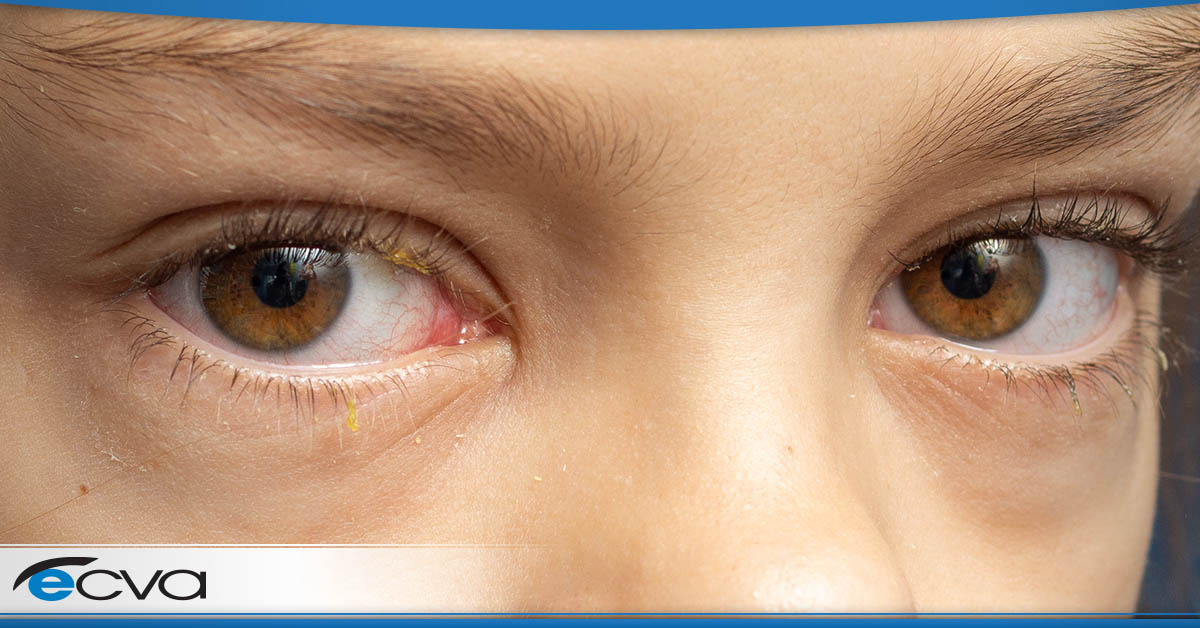Pediatric conjunctivitis – also known as pink eye – is incredibly common. Many children end up with the condition, though the exact cause can vary. Additionally, pink eye is often highly contagious, causing it to spread quickly among children.
If you have questions about pediatric conjunctivitis, including what it is, common causes, how to treat it, and when to see a doctor, here’s what you need to know.
What Is Pediatric Conjunctivitis?
Pediatric conjunctivitis is an eye condition that typically leads to inflammation and swelling of the conjunctiva of the eye. This causes the impacted eye’s tissues to appear pinkish and irritated, hence why the condition is also called “pink eye.”
There are actually several potential causes of pediatric conjunctivitis. Bacterial and viral infections are the most common cause in children, though allergies may also lead to pink eye.
With infections, conjunctivitis can be highly contagious. If a child touches the infected eye and then touches their other eye, they can spread the infection to the second eye. Similarly, if a child touches the infected eye and then handles an object, someone else who then handles the item could potentially pick up the infection.
Do Home or OTC Remedies Work?
With viral or bacterial conjunctivitis, home treatments and over-the-counter (OTC) remedies can ease the discomfort that can come with pink eye. However, they won’t treat the underlying cause of the infection. Viruses usually need to clear on their own time, and direct treatment of bacterial inflections often requires antibiotics, which aren’t available over the counter.
For allergy-related pink eye, OTC allergy medications may treat the underlying cause. Removing the allergen from the child’s environment is also beneficial, as it limits or eliminates their exposure to the irritant.
To alleviate the discomfort of pink eye, OTC anti-inflammatory medications can help. Lubricating eye drops may also be beneficial. Just make sure that the tip of the dropper never contacts the eye and that those drops are not used by other people, as the dropper can spread the infection if it comes in contact with fluid from the eye.
Using a clean washcloth that is dampened with warm water can also be soothing for bacterial or viral conjunctivitis. The washcloth should only be used once before it is washed. Otherwise, it could potentially spread the infection. For allergy-related pink eye, a cool, damp compress will often work better.
When Do You Need to See a Doctor for Pink Eye?
While pink eye will often resolve on its own, there are times when seeing a doctor is best. If your child is experiencing pain or light sensitivity, treatment by a medical professional is wise. Similarly, if your child is having trouble seeing, seek out treatment from a doctor.
Additionally, if the eye is producing a lot of mucus or pus, or the conjunctivitis is accompanied by a fever, body aches, or other signs of a serious infection, making an appointment with a doctor is a good idea. Finally, if the symptoms persist for more than a week or are getting worse, it’s time for treatment from a medical professional.
At ECVA, our staff works diligently to care for the eye health of our patients. If you suspect that you or your child have conjunctivitis or simply haven’t had an exam recently, schedule an appointment at your closest ECVA clinic today.







